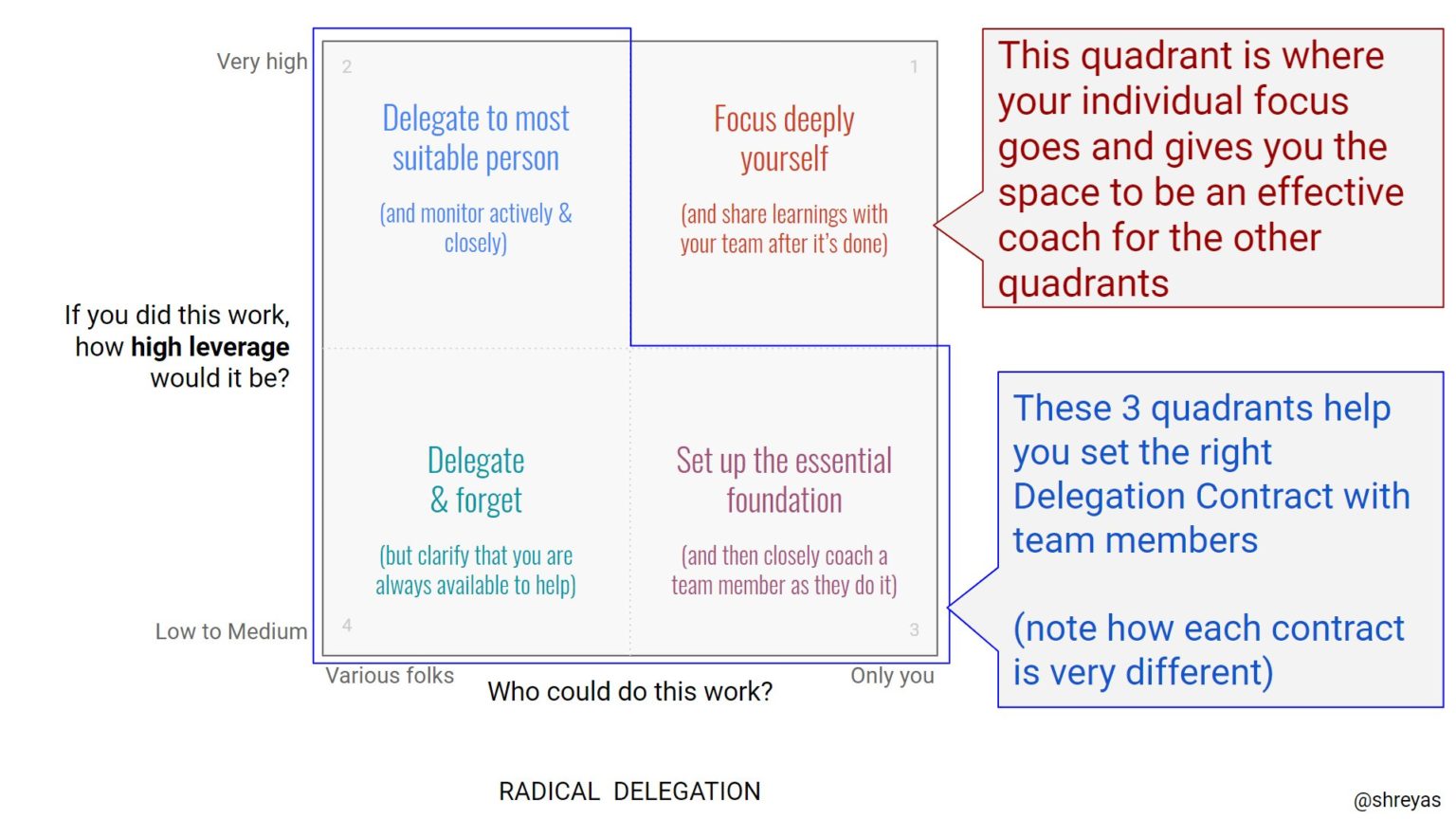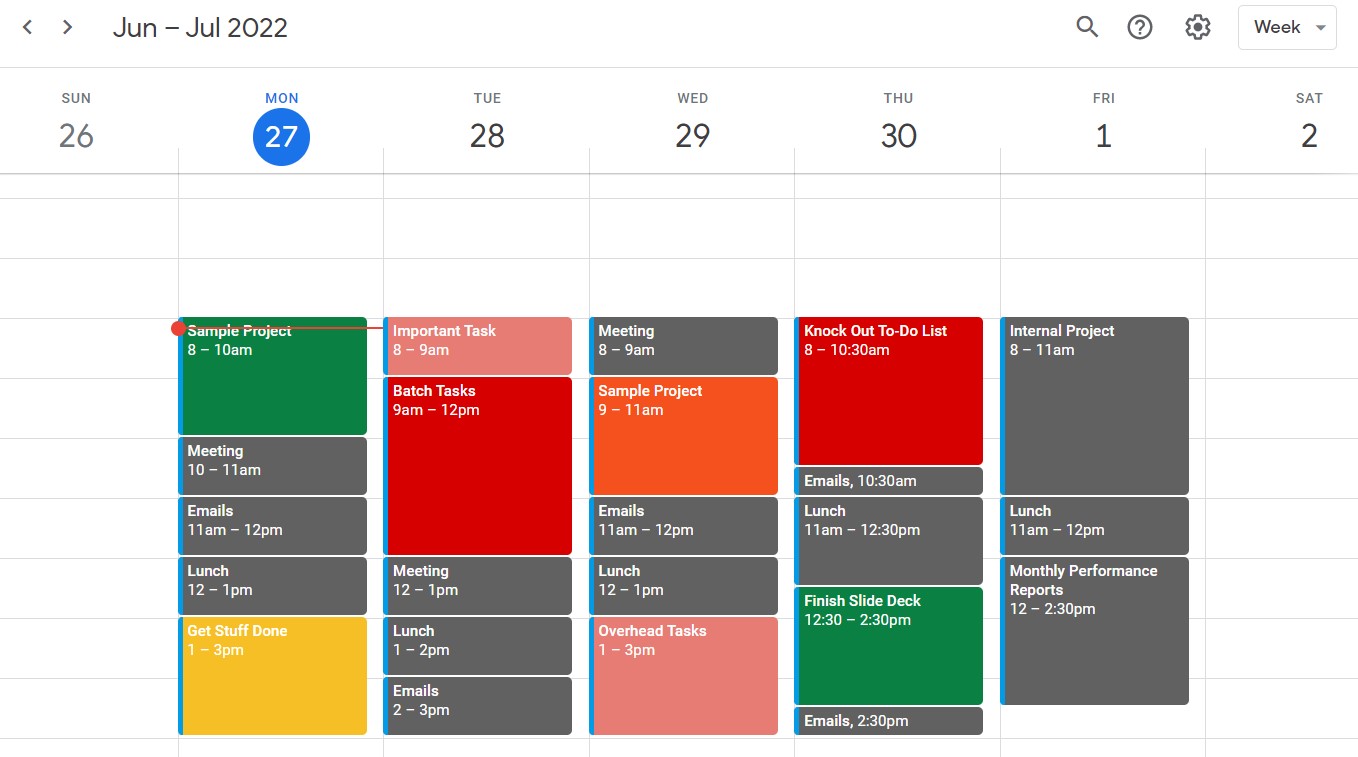Table of Contents
At Uproer, autonomy is a central part of our work ethos. We think micromanagement is disempowering, ineffective, and just an overall bad way to work. Instead, we prefer team members have as much control over their workday as possible. We’re adults and are capable of planning our days in a way that enables us to be our most productive, balanced, and fulfilled selves.
That said, managing your own day requires a skill set that needs to be developed intentionally. In this guide, we’ll walk you through how we think about time management, task prioritization, and deep work. By the time you’ve reached the end, we hope you have a few new ideas and inspiration for how to have a more productive, low-stress working life.
Planning and Prioritizing Your Workload
A truly productive workday starts with a clear plan. This sounds obvious but is surprisingly not the default in many workplaces. Instead, the go-to method is to fire up the laptop, open the inbox, and react to whatever comes throughout the day. This approach is a reliable way of making sure cortisol stays high and nothing really meaningful gets done.
As a performance-driven agency, we need the work we do to be impactful, high-quality, and delivered on time. This kind of work usually doesn’t happen by accident - it needs to be planned and scheduled.
So, how can we go about scheduling our work and planning our days in a way that promotes both productivity and sanity? Let’s start with prioritization.
Prioritizing Tasks
Prioritization is the first consideration in our planning matrix. Because time and resources are finite, prioritizing our work ensures we’re getting the most important things done and deferring the less important things to a later date. Generally speaking, the higher priority a task is, the earlier in your day or week you’ll schedule it.
The ability to effectively prioritize work is a skill that gets strengthened with time and experience. That said, there are a few useful frameworks, guidelines, and heuristics that will prove useful no matter where you are in your career development. Below we’ll get into the specifics of how we prioritize the work we do in our day-to-day at Uproer.
High Priority Tasks
These are the tasks that should receive priority status when planning your days because they produce results for clients, helping to provide a return on their investment and gain buy-in:
- Time-sensitive client deliverables
- Examples:
- Meeting agendas and preparation
- Performance reporting
- Content outlines and optimization
- Keyword research
- Examples:
- High-impact client deliverables
- Examples
- Strategy development
- Website migration consultation
- Content planning
- Technical SEO implementation
- Examples
Lower Priority Tasks
The tasks listed below are typically lower priority, at least in terms of scheduling. Note that “lower priority” doesn’t mean we don’t need to do them - it just means we schedule them around our higher-priority client projects.
- Internal networking meetings and check-ins
- Individual internal projects
- Emails, especially those which are not time-sensitive (we do always strive to be as responsive as possible to client emails)
- Various administrative tasks
- Internal communication: Slack, email, etc. (again, assuming the message is not actually urgent)
Client Deliverables vs. Internal Tasks
As a general rule, client deliverables take priority over internal tasks. This is especially the case when there’s a firm deadline in place. Client satisfaction is the key to any search marketing agency’s success and so it makes sense that client work comes first.
It’s important to clarify at this point that internal work is essential for leveling up both our business and our individual professional development. If we’re not setting aside the proper time to develop ourselves and work on important internal projects, we’ll become stagnant. The important thing to remember is that, as search marketers, internal projects shouldn’t take away from our ability to deliver client projects in a timely manner.
The LNO Framework
We’ve established that not all tasks are created equal. In addition to the criteria we just covered, a useful way to prioritize tasks is the LNO Framework developed by Shreyas Doshi. The LNO Framework considers not only the type of task (“leverage,” “neutral,” “overhead”) but also your daily energy rhythms.
For example, if you know your energy and focus are low at 3 pm most days, then you’ll want to use that time for what are called “overhead” tasks. You'll feel good about staying productive rather than feeling frustrated because you're not making progress on leverage or neutral tasks.
What does L/N/O stand for?
- L = Leverage tasks: Tasks that require your best effort
- Do these when energy & focus are high!
- E.g., strategy work, important meeting prep, skill development
- In this category are things that you can always get better at and that can make a big impact when done really well
- N = Neutral tasks: Tasks that require a good job, not perfection
- Do these when energy & focus are normal
- E.g., a lot of your regular tactical and reporting work (this is not to say that some of these tasks can't be considered Leverage, it all depends)
- In this category are things that are important but will move the needle inches - not miles
- O = Overhead tasks: The just-get-it-done tasks
- Do these when energy & focus are low
- E.g., send follow-up emails, update Scorecard metrics, reorganize Drive folder
- In this category are the low-brainpower tasks, save them for when you just don't have the energy for anything else
 Image credit: Shreyas Doshi
Image credit: Shreyas Doshi
There are a number of reasons why the LNO framework is well-suited to the work we do as search marketers:
- It gets us to track and manage our energy, rather than just our time. In an industry that’s more dependent on results and output than working a specific number of hours, thinking about energy makes more sense than thinking about clock time.
- It's a better way to support our own development: it encourages us to do our best work on the things that have the biggest impact while wasting little time & energy on low-impact tasks.
- It encourages us to be more thoughtful about (1) which tasks we should delegate and (2) how to set up our team members and ourselves for success.
Allocating The Appropriate Amount of Time for Tasks and Setting Realistic Deadlines
When you’re just beginning your career as a marketer, the reality is that it’ll take you a relatively long time to complete tasks. As you progress and become more efficient, the time it takes you to complete most tasks will decrease significantly. See the table below for a rough illustration of what we mean.
| Task | 3 Months In | 6 Months In | 1 Year In |
| Monthly Reporting | 3 Hours | 2 Hours | 1 Hour |
| Content Outline | 1.5 Hours | 1 Hour | 30 Minutes |
| Create Meeting Agenda | 45 Minutes | 30 Minutes | 15 Minutes |
When you’re just starting out, you’ll want to set aside more time than you think you’ll need to complete a task on time. As time goes by, you’ll want to give yourself less and less time to get those same tasks done.
Parkinson’s Law states that work will expand to fill the time allotted to complete it. As we get better at tasks, therefore, we need to also give ourselves less time to complete them. We’ve found that applying time constraints is a great way to make work more efficient, force ourselves to focus, and minimize extraneous, low-value activities.
Calendar Blocking: What Is It and Why Do We Do It?
One of the primary ways in which we maintain control over our schedules is by using a technique called time blocking. Time blocking simply means that we’re budgeting our time in the same way we would budget our money: each minute of the day is given a job. When we time block, we divide our available hours into chunks of time, each of which is used to work on a single task or batch of similar tasks.

We put these blocks of time on our calendar as events so we can reference our plan throughout the day and let others know what we’re working on this week. While we can never predict exactly how our day will go, time block planning allows us to structure our days rather than work reactively.
Here’s how time blocking helps us in our work as search marketers:
- It forces us to use our time more intentionally
- It promotes focused single-tasking over scattered and reactive multitasking (true multitasking doesn’t exist, but that’s another conversation)
- It helps us set aside time for deep, high-leverage work
- It lets us batch shallow, low-leverage work into discrete blocks of time so they don’t take over our day
- It provides us with a record of how we actually spend our time
Here are a few tips to help you time block effectively:
- Flexibility is key. When something takes longer or shorter than you had planned, simply adjust your calendar in real time. 90% of the benefits of time block planning come from being deliberate
- Try to plan out your entire week, rather than just making a plan daily. How your week actually plays out may look very different from what you planned, but that’s okay
- Consider practicing fixed-schedule productivity. Give yourself a certain amount of time to work each day and force yourself to get your work done within that time frame. Doing so will help you maintain work-life balance and force you to prioritize your work.
Creating Space for Deep Work
One of the most important aspects of scheduling your day and prioritizing projects is making time for deep, undistracted work. Deep work, a concept coined by Cal Newport, can be loosely defined as high-leverage work that requires periods of intense concentration. With this type of work, you’re applying your expertise and focus in a way that’s often cognitively difficult but incredibly valuable. When applying the 80/20 rule to work output (20% of work drives 80% of the value), deep work is almost always in the 20%.
Again, this type of work doesn’t just happen on its own. We need to set aside blocks of time during which we can commit to doing deep work and fending off potential distractions like Slack, Email, and watercooler chats.
Why Is Deep Work an Essential Part of Our Jobs?
The natural tendency is for our working hours to be punctuated by texts, emails, conversations, Zoom meetings, web surfing, and so on. While much of these activities are necessary, their constancy and the fact that they happen randomly throughout the day often waters down the quality of our work and makes it less efficient.
As search marketers, we pride ourselves on building relationships with our clients and offering great customer service. However, even the best customer service won’t keep a client around long-term if we’re not making progress toward their goals. It’s ultimately the output of our minds - in the form of strategy, deliverables, consultation, and so on - that creates value for our clients. When we allow too many distractions into our day and fail to set aside time for deep work, we’re unintentionally depleting the quality and efficiency of that output.
Resources for Learning More About Deep Work
Deep work is a concept we’ve borrowed, not created. If you’re interested in learning more about deep work, there are tons of great resources available that do a better job than we ever could of explaining the “why” behind deep work and why it’s such an important concept for knowledge workers to internalize.
- Deep Work - Rules for Focused Success in a Distracted World (Cal Newport)
- Deep Work - The Complete Guide (Doist)
- What is deep work? 7 rules to boost concentration and unleash your full potential (Asana)
- 5 Practices from Deep Work by Cal Newport That’ll Change Your Life (Nina Semczuk on Medium)
Closing Thoughts
The ideas we just covered are of course only the tip of the productivity iceberg and won’t work for everyone in every position. However, the idea of being more intentional with one’s time can be applied in almost any search marketing position, whether in-house or agency side, SEO or paid search. Prioritizing projects, practicing time blocking, and setting aside time for meaningful work not only make us more productive but also less stressed. If you ask us, that’s a combination worth striving for.

